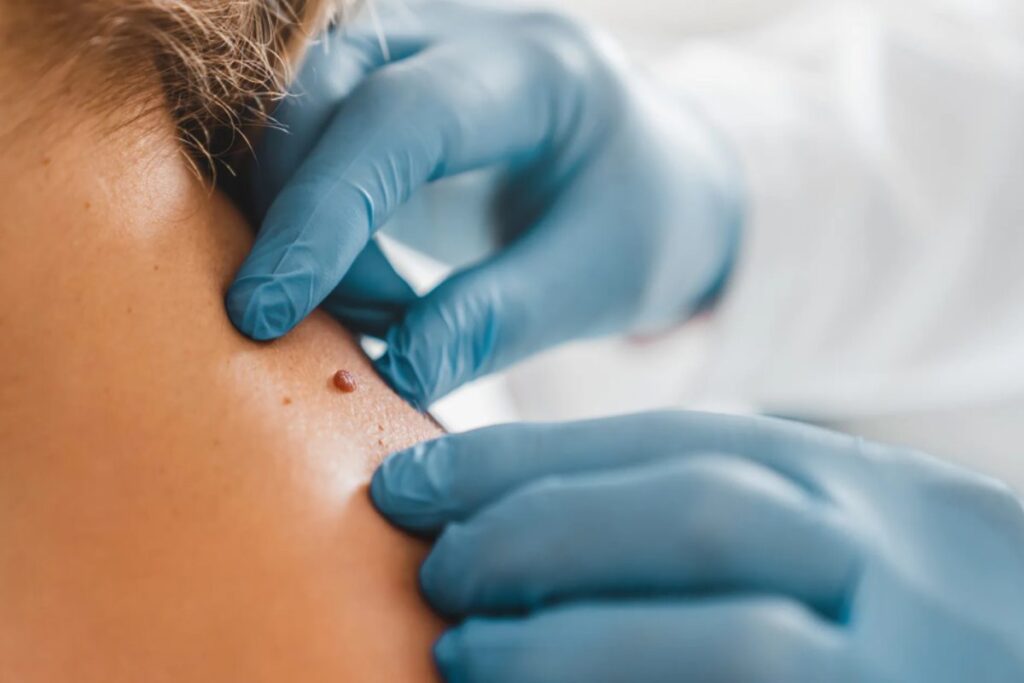Skin Tags Removal are small, soft pieces of skin that often appear where your skin rubs together, like on the neck, underarms, or eyelids. I’ve seen many people get worried about these little growths, especially when they show up in visible spots. But the good news is they’re usually harmless. I remember finding one on my neck a few years ago and thinking it was something serious, but after a quick visit to my dermatologist, I learned it’s a common thing.
Many people look into skin tags removal because they feel uncomfortable or don’t like how they look. While they don’t cause pain, they can get irritated from clothing or jewelry. Whether it’s for cosmetic reasons or just peace of mind, understanding the safe ways to remove them is important. From my own experience, it’s always best to explore gentle and proven methods, especially if you’re trying to do it at home.
What are skin tags?
Skin tags are small, soft, and harmless growths that hang off the skin.
They usually show up in areas where skin rubs together, like the neck or armpits.
They are not dangerous but can be annoying or unattractive to some people.
I had one under my arm once, and it kept getting irritated by my shirt.
Many people look for skin tags removal methods to feel more comfortable.
Causes of Skin Tags
- Friction from skin rubbing together, especially in folds like the neck, underarms, and thighs, is a main cause of skin tags.
- Obesity increases skin folds, making tags more likely to develop in those areas.
- Hormonal changes during pregnancy can trigger skin tag growth due to changes in skin and body chemistry.
- Insulin resistance or situations like type 2 diabetes are linked to a higher chance of developing skin tags.
- Genetics if your family members have them, you’re more likely to get them too.
- Aging they tend to appear more often as people grow older, especially after 40.
- People with these risk factors often explore skin tags removal to manage or prevent further growth.
Where Skin Tags Usually Appear
- Neck: A common spot due to frequent rubbing from clothes and jewelry.
- Underarms: Skin folds here often lead to the development of skin tags.
- Eyelids: The delicate skin on eyelids is a common area for small skin tags.
- Groin and thighs: Skin rubbing together, especially in active individuals or those with tight clothing.
- Under breasts: Another area where skin tags often appear due to friction and sweat.
These areas are where many people seek skin tags removal due to discomfort or irritation.
Is Skin Tag Removal Safe?
Yes, skin tag removal is usually safe when done correctly. In my experience, it’s important to choose the right method whether at home or with a doctor. Many people opt for over-the-counter products or home remedies like tea tree oil, but they should be careful not to cause irritation.
Professional treatments like cryotherapy (freezing) or excision are also safe when performed by a healthcare provider. I’ve seen how these methods work effectively and with minimal risk of infection. It’s always a good idea to consult with a doctor if you’re unsure, especially if the tag is in a sensitive area or causes pain.
Best Home Remedies for Skin Tag Removal
- Tea tree oil: Apply a few droplets on a cotton ball and use it twice a day to reduce the size of the skin tag.
- Apple cider vinegar: Immerse a strand ball in it and apply to the skin tag for 10-15 minutes daily. It can help dry out the tag.
- Dental floss: Tie dental floss about the base of the tag to cut off its plasma supply. This can work but should be done carefully to avoid infection.
- Garlic: Infatuation a garlic clove and apply it to the skin tag overnight, as garlic has natural enzymes that may help shrink the tag.
- Banana peel: Home a small piece of banana skin over the skin tag and safe it overnight. Some people find it helps remove skin tags over time.
Over-the-Counter Products
- Freezing kits: These products freeze the skin tag off, typically taking a few days or weeks to fully fall off.
- Skin tag removal creams: Applied directly to the tag, these creams help break down the skin tag over time.
- Removal patches: These patches gradually dry out the skin tag, producing it to fall off eventually.
- Liquid nitrogen: Some over-the-counter products use liquid nitrogen to freeze and remove the tag, similar to professional cryotherapy.
- Bandage-style removers: These patches are designed to stick to the skin tag and dry it out, causing it to eventually fall off.
Medical Treatments for Skin Tag Removal
- Cryotherapy: Liquid nitrogen is used to restriction the skin tag off. It’s quick, and the tag falls off within a few days.
- Excision: A doctor cuts off the skin label with a sterile blade. This is effective but may leave a small scar.
- Cauterization: The skin tag is scorched off using a small electrical charge, done in a medical setting.
- Ligation: The skin tag is tied off to cut off its blood source, causing it to fall off over time.
- Laser treatment: A laser is used to confiscate the skin tag by vaporizing it, with minimal risk of scarring.
Risks and Side Properties Of Skin Tag Removal
- Infection: If the skin tag isn’t removed properly, especially at home, there’s a risk of infection.
- Scarring: Some treatments, like excision or cauterization, may leave small scars.
- Irritation: Over-the-counter products or home remedies can cause skin irritation if used incorrectly.
- Skin burns: Improper use of freezing kits or other treatments can lead to burns or damage to surrounding skin.
- Bleeding: There’s a chance of minor bleeding during or after removal, especially if the tag is large.
How to Prevent Skin Tags
- Reduce friction: Wear loose-fitting clothes to avoid rubbing in areas like the neck, armpits, and thighs.
- Keep skin clean and dry: Moisture can increase friction, so make sure the skin stays dry and well-maintained.
- Maintain a healthy weight: Reducing excess skin folds helps minimalize friction and lowers the risk of developing skin tags.
- Moisturize and exfoliate: Regular moisturizing and gentle exfoliation can prevent skin from becoming irritated or prone to tags.
- Manage health conditions: If you have diabetes or hormonal imbalances, controlling these may help reduce the appearance of skin tags.


